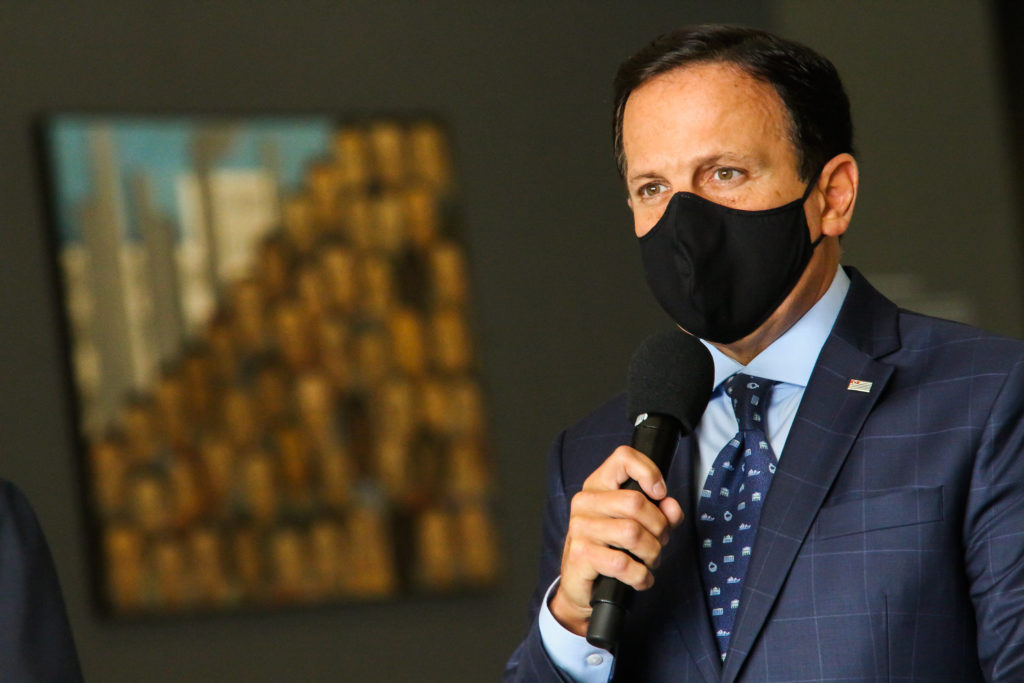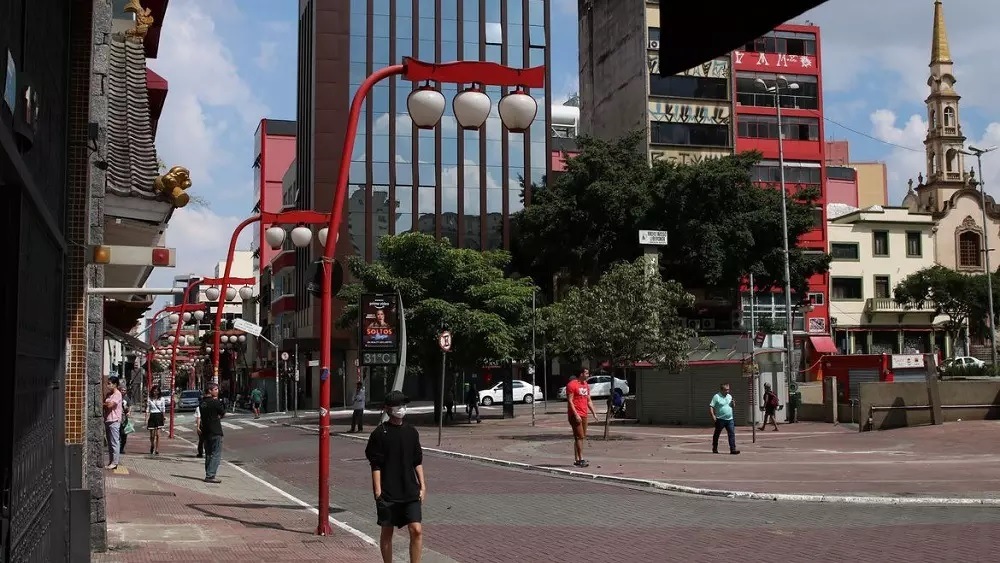SÃO PAULO, BRAZIL – Governor João Doria announced on Wednesday afternoon, June 10th, that the quarantine will be extended until June 28th due to the spread of the coronavirus. Moreover, the quarantine classification of various cities will be altered in the plan for a gradual resumption of economic activities.

Greater São Paulo, the São Paulo coast, and the city of Registro will move on from the red stage (most critical) to orange (with fewer restrictions). The flexibilization measures will become effective next Monday, June 15th. The inland cities of Barretos, Presidente Prudente, and Ribeirão Preto, originally orange, were reclassified to the red stage due to the increased spread of the disease. As a result, the opening of non-essential trade in these cities is once again banned.
“The São Paulo government has decreed a new quarantine from June 15th to 28th, it will be the fifth quarantine period in the state of São Paulo, this new quarantine will be called heterogeneous quarantine, where the São Paulo Plan will be implemented. It will be a conscientious resumption of the economy in stages and by regions, as provided for in the São Paulo Plan, carefully, safely and within the limits determined by science and medicine and we will not stray from this direction,” said Doria.
The shutdown of trade banning the operation of non-essential services was enforced by the coronavirus quarantine.
“There has been an improvement in the metropolitan region as a whole, in Baixada Santista and Vale do Ribeira. Together they are now a region that is moving on to the control stage, that is, the orange stage where the gradual resumption of trade and services is authorized, with limited capacity and service, working hours and the requirement to apply health and distancing protocols,” said Patricia Ellen, Secretary of Economic Development.
According to Marco Vinholi, Regional Development Secretary, the transition to the orange stage of the heavily industrialized ABC region just outside the city of São Paulo was achieved due to the increase in the number of ICU beds and the delivery of new ventilators.
“We managed to reach 68 percent of the bed occupancy in ABC, that number was over 86 percent 14 days ago and we have therefore overcome an occupancy rate now below 80 percent, which drives the region to the orange stage. What is still a concern in the region is the variation of mortality during the period and this is still what leads the region to the orange stage as a negative highlight,” he said.
The city of São Paulo has been in the orange stage since June 1st, but the reopening of street stores occurred only on Wednesday. The malls may reopen this Thursday, June 11th.
The number of deaths by coronavirus in the state of São Paulo broke a record for the second day in a row on Wednesday with 340 cases in 24 hours. As a result, 9,862 lives have now been lost in the state, and 156,316 people were infected.

Backtracking
The regions of Bauru and Araraquara, in the interior of São Paulo state, have backtracked in flexibilization and moved from the yellow to the orange stage, with further restrictions.
In Barretos and Presidente Prudente, flexibilization meant the cities went straight from the yellow to the red stage, without passing through orange. Ribeirão Preto went from orange to red. The other regions of the state remain in the orange stage. The opening of bars and restaurants to the public is allowed in the yellow stage.
“Our willingness and determination to move forward with the São Paulo Plan will also lead us to backtrack and to guide restrictive measures in quarantine,” argued Governor João Doria.
However, he says that the government’s assessment was that there was no mistake in the case of Barretos and Presidente Prudente, which retreated two stages. “The government’s assessment is that there was no mistake. Cities that deserve it, due to their rates, to move towards a greater release range will do so, the cities that will have to retain their position due to their rates will do so, and those that have to regress will do so. This is our position, clearly and objectively.”
The regions that have gone to red will see more restrictive measures. “The Ribeirão Preto region has experienced an increase in cases, particularly with regard to Covid-19 cases requiring hospitalization, suspected cases, and also deaths. This week, in the Ribeirão Preto region, the increase in hospitalizations over the preceding week was 51 percent and the variation in the number of deaths over the preceding week was 100 percent.
“In the region of Presidente Prudente, the variation in hospitalizations reached 60 percent and the variation in deaths was 50 percent higher than the preceding week. And to finalize, the region of Barretos had a 93 percent increase in hospitalizations over the preceding week and 100 percent in deaths,” explained Patricia Ellen.
However, Greater São Paulo and the coastal region Baixada Santista were still classed as in the red stage, where no flexibility measures are allowed, which prompted complaints from Mayors.
During this pandemic period, the state’s 17 administrative regions were divided into stages, which are subdivided into five colors: red, orange, yellow, green, and blue.
The criteria for classifying cities by regions and color stages considered the ratio of the number of hospital beds, mainly intensive care unit (ICU) beds, to the number of people infected by Covid-19.
- In the red stage, no trade will be allowed;
- In the orange stage, trade will be allowed with many restrictions;
- In the yellow stage, trade will be allowed, but with some restrictions;
- In the green stage, trade will be allowed, but with even fewer restrictions;
- In the blue stage, total opening of trade will be allowed, with no restrictions.
Orange stage
In the orange stage the government allows the reopening of some economic sectors as from June 1st, with many restrictions, as long as the plan is approved by the local mayoralties: real estate activities; professional offices; vehicle dealerships; street stores; and shopping malls.
Source: G1

